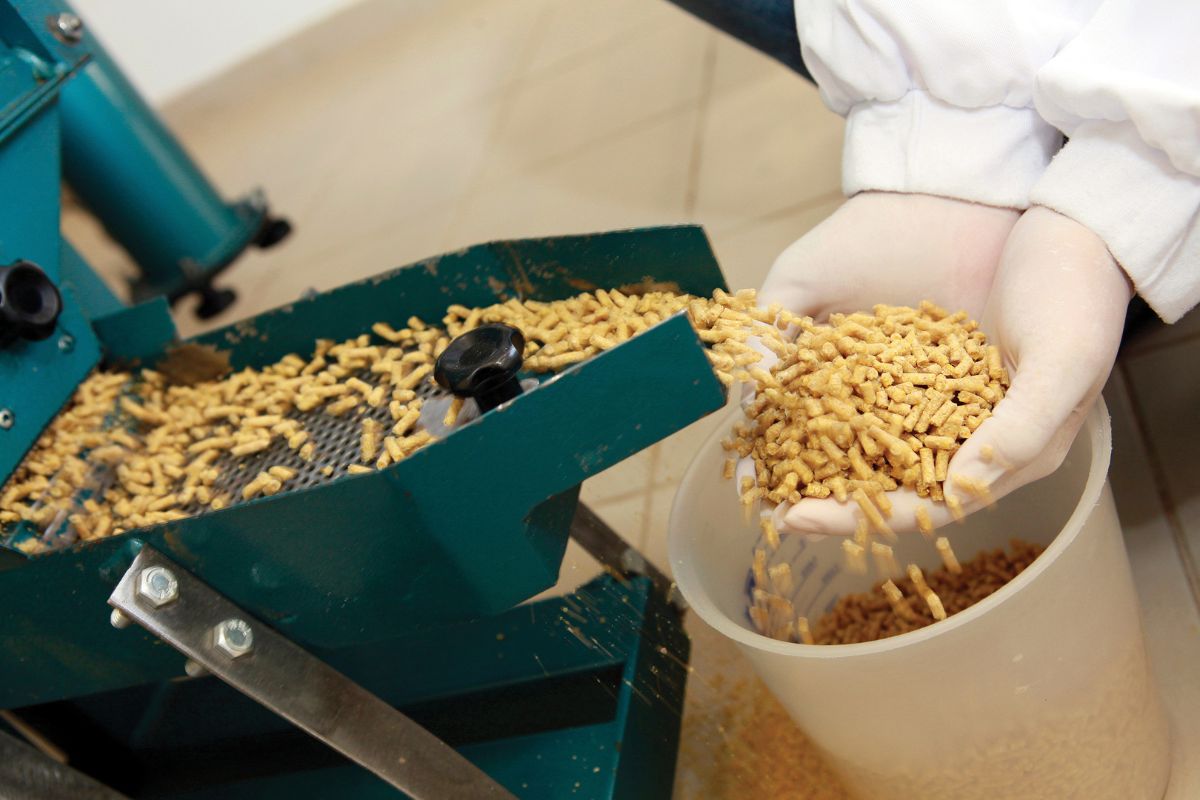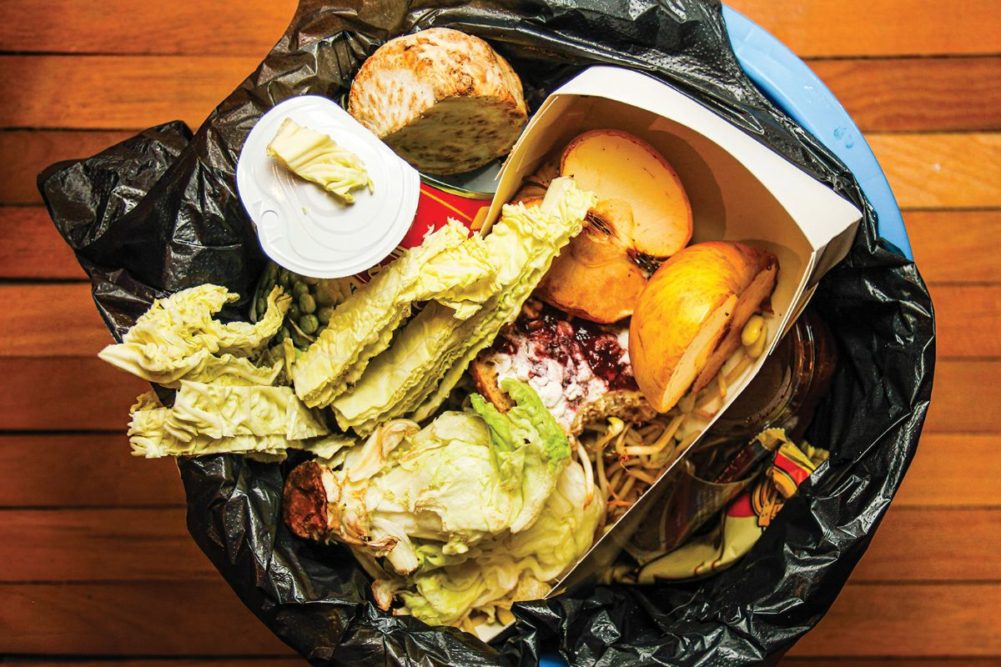MANHATTAN, KANSAS, US — Food waste often is considered any food that was not used for its intended purpose and has otherwise been discarded to a landfill. In 2010, the US Department of Agriculture (USDA) estimated that the amount of food waste accumulated in the United States accounted for 30% to 40% of all food produced annually, equaling approximately 133 billion pounds or $161 billion worth. This food waste contributes to greenhouse gas emissions as well as using resources that could have been used elsewhere such as freshwater, labor and oil.
A 2009 study calculated that the amount of food waste generated had increased almost 50% from 1974 to 2003. To counteract this surge, the EPA and USDA developed an initiative to reduce waste in half by 2030. This initiative included a Food Waste Recovery Hierarchy that outlines alternative uses for food waste that divert it away from landfills. One of the alternatives, after preferably either reducing the source or donating it to food banks or shelters, is to convert it to animal feed.
To begin approaching this problem we must acknowledge that there are several steps along the food supply chain before it is acquired by the end consumer. The supply chain allows food to spoil or become damaged at several points such as manufacturing, transportation, or just sitting on the shelf at the grocery store for too long. Therefore, we must look at reducing waste at multiple stages.
Multiple studies have shown that there are several ways to feed different types of food waste and that it has the promising possibility to be an effective feedstuff.
Based on a report by the Food Waste Reduction Alliance (2014) and a study done by Dou et al. (2016), the percentage of food waste that is converted into animal feed decreases as it moves further down the supply chain. The manufacturing or processing sector converts 80% of its food waste to animal feed while only about 5% is discarded to a landfill. This is evident in diets that feed mills mix every day by using soybean meal, bakery meal, dried distiller’s grains from ethanol production, brewers’ grains from the brewery process, and multiple ingredients from the meat and rendering processes such as tallow and meat, bone, and feather meals to name just a few.
However, when we consider retail and restaurant sectors, only 12% and 1% of their total waste is converted to animal feed while 45% and 97% is sent to landfills, respectively. This leaves a large opportunity to divert that food waste away from disposal areas and upcycle it for a greater use.
Nutritional characteristics of food waste
To understand the handling characteristics and nutritional properties of food waste, a preliminary study was conducted at Kansas State University collecting food waste from a student dining center over the course of six weeks (Beckman et al., unpublished). This waste included any food that could not be reheated, repurposed, or donated to a local food pantry and mainly came from the buffet line.
Examples of this would be salad bar fixings, pasta, scrambled eggs, desserts, and hamburger patties. They found that food waste contains a moisture content as high as 70%. This poses a problem as it creates an ideal environment for rapid spoilage, mold and bacterial growth.
On the other hand, the average ether extract content was 25% and crude protein was 21% on a dry matter basis. Fat and protein are two of the most expensive nutrient components when formulating diets. Food waste provides more fat than conventional feedstuffs such as ground corn and soybean meal and its crude protein is greater than corn and about half of soybean meal. Oftentimes fiber is considered a negative aspect when feeding monogastric species and co-product ingredients typically are associated with higher concentrations of fiber. However, this food waste only contained 7% neutral detergent fiber on a dry matter basis, which is less than reported values for corn and soybean meal.
Beckman et al. also measured the nutritional value of kitchen scraps that were discarded. These were inedible remnants of recipe ingredients such as pepper stems, onion peels and melon rinds. This form of food waste had 15% more moisture and more than double the amount of neutral detergent fiber than the aforementioned waste while having lower concentrations of ether extract, crude protein, and metabolizable energy. This nutrient profile suggests that kitchen scraps might be more ideal for ruminant species than for monogastric species.
Concerns
There can be multiple concerns when considering using food waste in diets. Most notably are the potential nutrient variability and the federal ban of feeding any mammalian protein products back to ruminant animals. The Food and Drug Administration passed the Modernization Act of 1997 banning the use of mammalian protein products to be fed back to ruminant animals in an effort to avoid bovine spongiform encephalopathy, also known as mad cow disease. With the large range of potential food that could constitute food waste, it would be very difficult to ensure that there was no trace of mammalian product present.
However, there are exemptions to this law. One of them being food that was intended for human consumption. This is because of the extensive food safety precautions set in place to certify a safe food supply for the consumers as well as cooking and further processing. On the other hand, there is no guarantee that food waste did not come into contact with uncooked mammalian products. Additionally, producers and feed mills may not want to take on the risk for fear of disease or public opinion.
To consider using food waste for animal feed, moisture removal and processing of the food waste must be considered to determine if it can be considered an economically valuable option.
The other eminent concern is the variability in nutrient content. A study conducted at Kansas State University wanted to test the amount of variability by determining metabolizable energy and amino acid digestibility trials with broilers (Beckman et al., unpublished). Food waste nutrient availability was determined by feeding weekly collections of food waste to test if there were differences by time periods.
All food waste collections were mixed with soybean meal and dry-extruded at a minimum of 284℃. This process created a kill step for any bacterial concern while simultaneously reducing moisture content to allow the food waste to be shelf stable. Of the four time periods that were collected, they found that the first week of food waste had a greater protein digestibility of all amino acids than the second week. Additionally, the third- and fourth-week food waste collections were intermediate to the first and second weeks.
Lysine digestibility of the four week-long collection periods ranged from 70.68% to 77.08% digestible while methionine ranged from 67.42% to 76.48% digestible. Metabolizable energy also was determined of the same four week-long collection periods and ranged from 2,259 to 3,295 kcal/kg. The third week had a greater metabolizable energy content than weeks one and two with week four being intermediate. This shows that variability may not be as much as initially thought and that if enough food waste is composited together and monitored for nutrient content, it could create a reliable feedstuff. When comparing these thermally processed food waste products to soybean meal, they had a similar protein digestibility and energy content.
Previous research also has been conducted to determine the value of different collection streams when fed to pigs. Pigs fed food waste specifically sourced from a supermarket had a greater methionine and tryptophan digestibility compared to soybean meal while lysine digestibility was similar to soybean meal (Fung et al., 2019). Recycling energy and nutrients from various food waste sources into swine feeding programs is constrained by the high variability and lack of data on the digestibility of energy and nutrients.
Therefore, the objectives of this study were to evaluate the digestibility of energy, amino acids, and phosphorus in thermally dried food waste sources fed to growing pigs and to compare in vivo determined digestibility values with those obtained from in vitro digestibility procedures and published prediction equations to determine the accuracy of using these nutritional evaluation methods. Pigs (n = 36; initial body weight = 16.37 ± 1.9 kg). Additionally, digestible and metabolizable energy digestibility were 5,071 and 4,922 kcal/kg on a dry matter basis, respectively, compared to corn that only contains 3,928 and 3,875 kcal/kg, respectively.
Other forms of food waste also were determined for protein and energy digestibility in the study. One of those forms was fish waste, which contained greater energy content than corn and improved protein digestibility compared to reported values of fish meal. The last form of food waste analyzed was fruit and vegetable waste. This form of waste contained a significantly less amount of energy and decreased protein digestibility.
 Credit: ©CASA DE PHOTO - STOCK.ADOBE.COM
Credit: ©CASA DE PHOTO - STOCK.ADOBE.COMStrategies for use of food waste
To consider using food waste for animal feed, moisture removal and processing of the food waste must be considered to determine if it may be considered an economically valuable option. There are also additional value-added scenarios that potentially could be considered for upcycling food waste. One potential option is to use it as a fermentation medium to produce astaxanthin, a keto-carotenoid that has been shown to have antioxidant and anti-inflammatory properties (Lai et al., 2022). The use of astaxanthin commonly is used in the aquaculture industry for its ability to pigment farm-raised fish. Other potential uses included the use of food waste as a potential input in the production of insects, which would be later used as a feed ingredient (Elleby et al., 2022).
In conclusion, the livestock and feed industries are already significant recyclers, utilizing byproducts and end materials that otherwise would have little to no purpose for human consumption. However, there is an opportunity to take that one step further to include food waste from further down the food supply chain.
Multiple studies have shown that there are several ways to feed different types of food waste and that it has the promising possibility to be an effective feedstuff. There are multiple efforts currently working to find efficient and effective ways to make it available as a potential feed ingredient, but continued work and research is needed to fully understand the impact on animal performance, feed mill application, logistics, and costs.
Chad Paulk is an assistant professor of feed science and management in the Department of Grain Science and Industry at Kansas State University. He may be reached at: [email protected].






